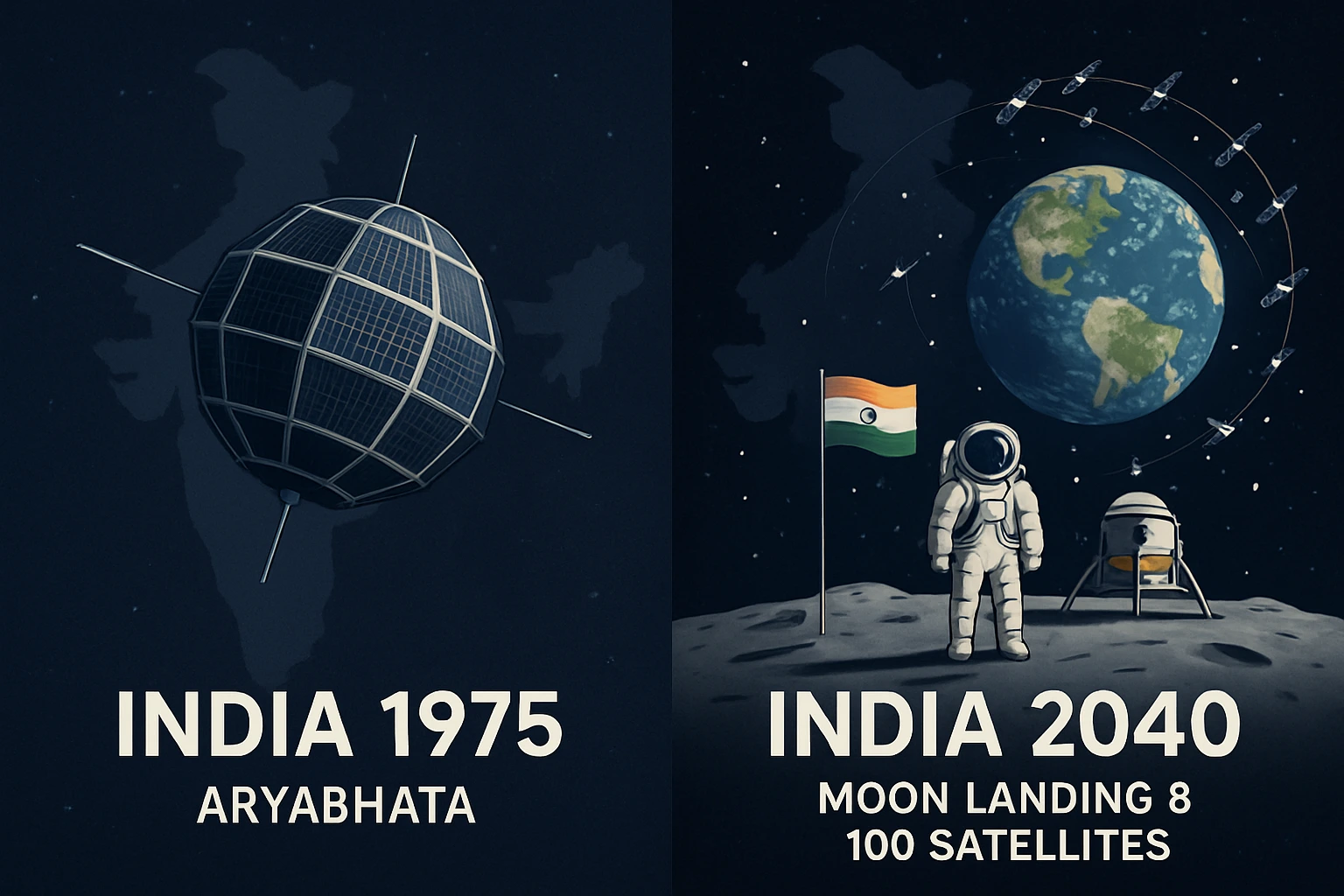India Space Mission 2040
India is preparing for one of its most ambitious milestones in history “India Space Mission 2040” — a successful moon landing and the deployment of 100+ satellites by 2040. With ISRO at the helm, this mission is not just about space exploration but about boosting India’s technological strength, digital growth, and global leadership in the new space era.
India’s Moon Landing Goal
ISRO’s lunar vision goes beyond Chandrayaan-3’s historic achievement. By 2040, India aims for an advanced moon landing designed for long-term exploration, potential lunar resource extraction, and preparations for human space travel.
Key Highlights:
- Focus on sustained lunar presence
- Research on lunar minerals and resources (like Helium-3)
- Foundation for future crewed missions

100+ Satellites for a Digital Future
India also plans to launch over one hundred satellites by 2040. These will enhance communication services, high-speed internet, weather monitoring, navigation, and disaster management. Such a massive satellite network will not only support India’s digital growth but also strengthen national security and global connectivity.
The 100+ Satellites Mega Plan
Alongside lunar exploration, ISRO aims to launch over 100 satellites by 2040. This constellation will create massive digital, communication, and data-sharing benefits for India.
Benefits of 100+ Satellites:
- Faster internet and stronger rural connectivity
- Real-time weather data & disaster management support
- Enhanced GPS navigation for aviation, transport & defense
- Smarter cities & precision agriculture
Why India’s Vision 2040 Matters
India’s bold space roadmap is not just about exploration — it is about transforming life on Earth and beyond.
Economic Growth
- Boost to India’s space-tech industry and startups
- Revenue from international satellite launches
National Security
- Strengthened border surveillance and defense communications
Global Leadership
- A stronger role in international space governance
- Collaboration with space agencies and private players
Scientific Innovation
- Deeper understanding of planetary science
- Resource studies critical for sustainable future missions
Inspiration for Youth
- Encouraging students, entrepreneurs, and researchers to contribute to space-tech innovation
ISRO and the Future of Space in India
ISRO’s vision balances self-reliance (Atmanirbhar Bharat) and global collaboration. With cutting-edge projects like reusable rockets, indigenous propulsion, and private space startups entering the ecosystem, India is positioning itself as a powerhouse in the future $1 trillion global space economy.
Conclusion
The India space mission 2040 is not just about scientific milestones—it is about shaping the future. A successful moon landing and deployment of 100 satellites will place India among the world’s leading space powers.
❓ FAQs on India’s Space Mission 2040
1. What is India’s Space Mission 2040?
India’s Space Mission 2040 is a long-term roadmap by ISRO, which includes a successful moon landing mission and the launch of 100+ satellites to strengthen communication, navigation, security, and scientific research.
2. When will India’s moon landing take place?
India plans a more advanced moon landing by 2040, focusing on long-term exploration, research on lunar resources, and preparing for future human missions.
3. How many satellites will India launch by 2040?
ISRO has set a target of launching over 100 satellites by 2040, aimed at enhancing internet connectivity, weather forecasting, disaster management, and rural communications.
4. Why is India’s 2040 space vision important?
The India 2040 space vision is crucial because it boosts self-reliance, strengthens the digital economy, enhances space security, and positions India as a global leader in space exploration.
5. How will India’s satellite network help the common people?
The planned 100-satellite network will improve internet services in remote areas, provide better weather predictions for farmers, enhance GPS services for transport, and support disaster relief operations.
